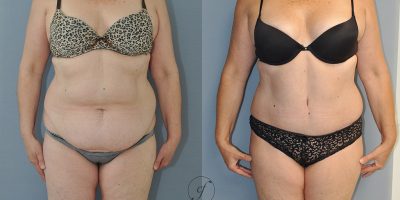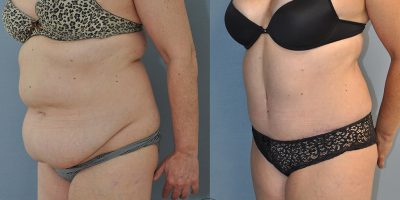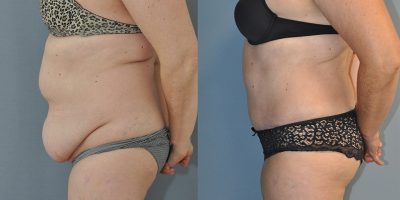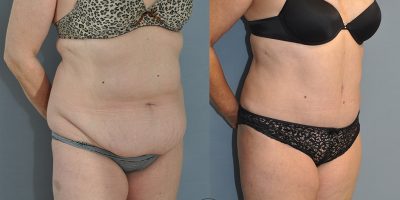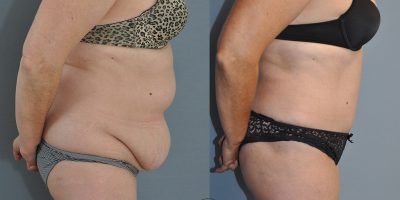Lipoabdominoplasty, the best of liposuction and abdominoplasty
Lipoabdominoplasty is the best technique that exists at the moment to treat the abdominal contour, that is, the appearance of the abdomen, flanks and back. This is a technique that we perform in our aesthetic surgery clinic in Madrid.
When we evaluate the appearance of the abdomen, it is very important to remember that we must also evaluate the appearance of the back and flanks, since all of this is treated uniformly in what is called “body contouring surgery.” Traditionally there have been two surgeries to reshape the body, abdominoplasty (with all its variants) and liposuction (also called liposculpture, with all its variants).
Results – Lipoabdominoplasty
-->Types of abdominoplasty
- Mini tummy tuck (without removing the navel).
- Abdominoplasty with horizontal scar with rectus plication.
- Abdominoplasty with horizontal scar and plication of the rectus and obliques.
- Anchor tummy tuck (horizontal and vertical scar).
- Circumferential abdominoplasty (lower body lift).
Types of liposuction (also called liposculpture)
- Conventional liposuction of abdomen and flanks.
- High definition liposuction.
- laser liposuction
- Ultrasonic liposuction
- Vaser Liposuction
The main problem with liposuction is that it is a fantastic technique for removing fat but it does not treat excess skin . Laser and ultrasonic liposuction arose with the idea of heating the subcutaneous dermis and generating greater retraction, but the results today are disappointing, increase the risk of complications (burns, seromas), and do not ensure homogeneous retraction (wrinkles in the skin, irregularities). Furthermore, in some cases they can damage the subcutaneous vascularization (the subdermal plexus), compromising the results of a future abdominoplasty.
On the other hand, abdominoplasty is an excellent technique to treat excess skin in the abdomen, an excellent technique to treat diastasis of the rectus abdominis muscles (the bulging of the belly) and the only way to eliminate what we call the flap. (skin and fat that accumulates over the years between the navel and the pubis). The main defects of abdominoplasty are the difficulty in reducing excess fat from the navel upwards and the risk of seroma .
Seroma is the accumulation of fluid, usually of lymphatic origin, between the muscles of the abdominal wall and the detached plane of skin and fat. Excessive mobilization in the postoperative period or not wearing a well-fitting belt can cause seroma to accumulate, which is not a serious complication but lengthens the postoperative period and sometimes requires a return to the operating room.
The fat that accumulates above the navel is difficult to treat with a conventional abdominoplasty without endangering the vascularization and healing of the abdomen. There is a technique called abdominal "thinning" (a technique that we occasionally perform in our clinic in Madrid), to defat that region. It consists of eliminating the fat that accumulates below a plane called Scarpa's fascia. The problem is that it greatly lengthens the surgical time and, from our point of view, increases the risk of fluid accumulation (seroma). Currently we use the “thinning” technique in very few cases in which we cannot perform lipoabdominoplasty.
Lipoabdominoplasty is the combination of the best of both techniques (liposuction and abdominoplasty) but without their defects. It is a slightly longer surgery than the conventional abdominoplasty but not as long as the “thinning”. The surgery begins with liposuction of the entire abdomen . Once the entire abdomen has been liposuctioned, ONLY the skin from the navel to the pubis is removed , respecting all lymphatic and blood vessels . From the navel upwards, only the area where the rectus abdominis plication is to be performed (the suturing of the abdominal wall muscles) is removed. Finally, it is closed directly WITHOUT DETAILING the upper plane. This technique described by Dr Osvaldo Saldanha has multiple advantages:
- It drastically reduces the risk of seroma (there are no detachments, lymphatics and blood vessels are preserved).
- Reduces the thickness of fat from the navel upwards without putting scarring or vascularization at risk.
- Improves recovery.
- Better sensitivity in the abdominal wall (no sensitive nerves are cut).
Lipoabdominoplasty with selective and safe undermining. Aesthetic Plast Surg. 2003 Jul-Aug http://www.ncbi.nlm.nih.gov/pubmed/15058559
This technique allows us to correctly treat cases as complex as the following, in which we find excess fat, excess skin, excessive bulging of the abdominal wall due to muscle weakness, etc...
SUMMARY
- Liposuction removes fat but does not treat excess skin.
- Conventional abdominoplasty removes skin and fat but has a high risk of seroma and difficulty in losing excess fat from the navel upwards.
- The “thinning” technique reduces fat in the upper abdomen at the cost of lengthening the procedure and increasing the detachment area, which can increase the risk of seroma.
- From my point of view, Saldanha lipoabdominoplasty is the best technique that exists to date to treat all abdominal defects without increasing the associated risks (less seroma, better recovery, better healing).
